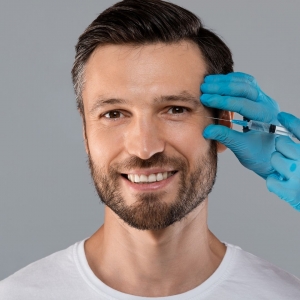Back in March, The Consulting Rooms’ Ron Myers reported on the medical aesthetic industry’s “hot” controversy: should Beauty Therapists be allowed to inject Botulinum Toxin and Fillers?
Traditionally, as at Cosmetic Courses National Training Centre, training in botulinum toxin and dermal filler treatments has been the exclusive domain of the medically qualified. Cosmetic Courses lists surgeons, registered nurses, opthamologists, doctors, dermatologists, dentists, dental hygienists, dental therapists and certain paramedics amongst its accepted delegates; no mention of Beauty Therapists, despite the hundreds of calls a year from eager candidates.
The logic behind this is strong. To date, the Independent Healthcare Advisory Services’ (IHAS) Treatments You Can Trust Register has refused to provide quality assurance accreditation to cosmetic injectable providers who do not fall into the above job fields. This is typical, Cosmetic Courses Coordinator Rachael Langford confirms, of industry attitudes generally. Insurance is very difficult to obtain to train non-medical delegates in cosmetic injectables and, in our experience, a Beauty Therapist is likely to have a very tough time finding insurance to set up their business afterwards. As Ron Myers points out, the manufacturers and major suppliers themselves of these products do not support their use by non-medically qualified practitioners, which surely speaks volumes.
Many Beauty Therapists are keen to come on botox® training courses, however, and very vocal about their rights to become Medical Aesthetic Practitioners. In such difficult times of economic recession, practitioners from all backgrounds (Myers acknowledges) ‘want to generate an income from this evolving market segment’. As Dr. Phillip Dobson points out, technically there is nothing illegal about a Beauty Therapist administering botulinum toxin (if a doctor or dentist has signed the scripts for them) and dermal fillers, so long as they do not mislead their patients into believing that they are medically qualified; it all comes down to patient consent. Many Beauty Therapists who telephone Cosmetic Courses argue that they have a better understanding of the skin than, say, a dentist and a number of them have already attended anaphylaxis or resuscitation training. They claim that there is too much “superiority” and “snotty remarks” in the industry and they may have a fair point; even amongst those who are accepted to inject, some Cosmetic and Plastic Surgeons still frown upon Dentists and Nurses who do so. Now an organisation called the CTIA (Cosmetic Treatments and Injectables Association) has been founded to challenge the exclusion of Beauty Therapists from cosmetic injectables, on the understanding that all practitioners should be inspected regularly for quality.
Yet as Dr Samantha Gammell, President Elect of the British Association of Cosmetic Doctors (BACD) maintains:
“A one day training course does not provide non-medically qualified ‘therapists’ with the depth of knowledge required for these types of treatments nor the understanding or skills to deal with the complications that can occasionally arise from them. The public needs to protect themselves by demanding to be treated in a safe medical environment by a competent, well trained cosmetic doctor or a suitable healthcare professional who makes the patients interests his or her first concern. It may be cosmetic but it is still medicine.”
Whilst Cosmetic Courses sympathise with the frustration of Beauty Therapists, founder Mr Adrian Richards emphasises that we fully support the BACD. “At the end of the day,” says Mr Richards, “dermal fillers and botulinum toxin are injectable substances that can cause harm. We believe they should only be used by trained medical professionals with the appropriate training. This is why we set up Cosmetic Courses, to offer the highest standards of training and make every effort to ensure that the safety of patients is of paramount importance.” The Cosmetic Courses team are looking into possible alternative training options for Beauty Therapists rather than injectables, so that they can still support their enthusiasm for the Medical Aesthetics industry…more on this coming soon!












